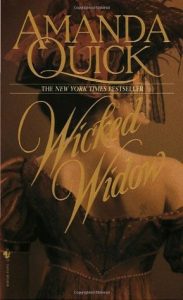Title: Quantum Mechanics: The Theoretical Minimum
Author: Leonard Susskind
First published January 1, 2014
364 pages, Hardcover
ISBN: 9780465036677 (ISBN10: 0465036678)
Rating: 4.33
Overview
In Quantum Mechanics: The Theoretical Minimum, Leonard Susskind and Art Friedman team up to provide a clear and accessible introduction to the complex world of quantum physics. This follow-up to Susskind’s bestselling book on classical mechanics dives into the mathematics and theory behind the behavior of sub-atomic particles.
Embracing the weirdness and uncertainty of quantum mechanics, the authors guide readers through the principles of quantum states, entanglement, particle and wave states, and more. With exercises at the end of each chapter, this book is perfect for amateur scientists looking to learn physics on their own terms.
Running parallel to Susskind’s Stanford University course, Quantum Mechanics: The Theoretical Minimum is an approachable yet rigorous tool kit for mastering this famously difficult topic.
About the Author
Meet Leonard Susskind, a brilliant mind in the field of Theoretical Physics, currently holding the esteemed Felix Bloch Professor title at Stanford University. His research areas encompass a diverse range of topics, from string theory to quantum field theory, quantum statistical mechanics and quantum cosmology.
His contributions to the field have earned him membership in both the National Academy of Sciences and the American Academy of Arts and Sciences. In addition, he is also an associate member of the faculty at Canada’s Perimeter Institute for Theoretical Physics, and a distinguished professor of the Korea Institute for Advanced Study.
Editoral Review
Quantum Mechanics: The Theoretical Minimum is a book by Leonard Susskind that explores the complex and fundamental principles of quantum theory. The book was first published on January 1, 2014, and is an essential read for anyone interested in physics, science, or mathematics.
Susskind is a renowned theoretical physicist who has made significant contributions to our understanding of the universe. In this book, he distills his knowledge and expertise to provide readers with an accessible and insightful guide to quantum mechanics.
The book is written in a clear and concise style, making it easy for readers to follow along and understand the principles of quantum theory. Susskind uses everyday examples and analogies to explain complex concepts such as wave-particle duality, tunneling, and entanglement.
The book is divided into three parts, with each section building on the previous one. The first part introduces readers to the basic concepts of quantum mechanics, while the second delves deeper into the principles and applications of the theory.
The third part explores advanced topics such as quantum field theory and quantum gravity. The book is not just a dry academic text, but it also has historical and cultural significance.
The book provides an excellent overview of the development of quantum mechanics and its impact on modern science and technology. One of the strengths of the book is its thoroughness in covering the subject matter.
Susskind does an admirable job of explaining complex concepts and building upon them in a logical and coherent manner. He also uses a conversational tone that makes the material more engaging.
One downside of the book is that it may be challenging for readers without a background in math or physics to fully grasp the concepts. However, Susskind does his best to make the material accessible to a wide audience.
Overall, Quantum Mechanics: The Theoretical Minimum is an excellent book that provides readers with a comprehensive overview of quantum mechanics. It is especially useful for students, researchers, and anyone interested in the fundamental principles of the universe.
The book is well-written, insightful, and informative. I highly recommend it.
Score: 4/5



